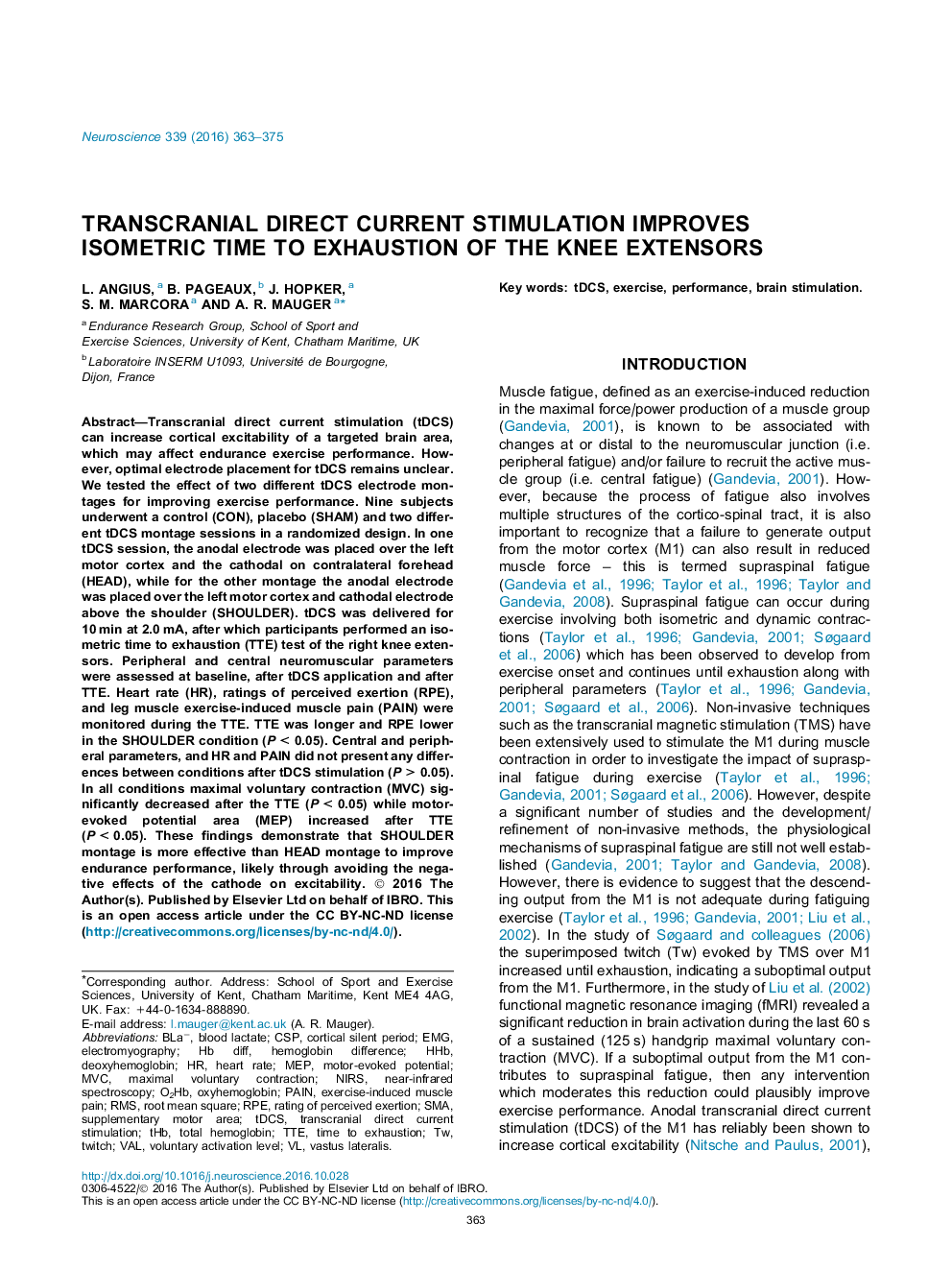| کد مقاله | کد نشریه | سال انتشار | مقاله انگلیسی | نسخه تمام متن |
|---|---|---|---|---|
| 6270621 | 1614737 | 2016 | 13 صفحه PDF | دانلود رایگان |
- This study tested the efficacy of a tDCS M1 cephalic and extra-cephalic electrode montage on knee extensor muscle fatigue.
- Anodal stimulation using an extra-cephalic electrode decreased perception of effort and increased time to exhaustion.
- Anodal stimulation using a cephalic electrode elicited no effect on perception of effort or exercise time to exhaustion.
- tDCS elicited no effect in neuromuscular response and no changes in central or peripheral parameters between conditions.
Transcranial direct current stimulation (tDCS) can increase cortical excitability of a targeted brain area, which may affect endurance exercise performance. However, optimal electrode placement for tDCS remains unclear. We tested the effect of two different tDCS electrode montages for improving exercise performance. Nine subjects underwent a control (CON), placebo (SHAM) and two different tDCS montage sessions in a randomized design. In one tDCS session, the anodal electrode was placed over the left motor cortex and the cathodal on contralateral forehead (HEAD), while for the other montage the anodal electrode was placed over the left motor cortex and cathodal electrode above the shoulder (SHOULDER). tDCS was delivered for 10Â min at 2.0Â mA, after which participants performed an isometric time to exhaustion (TTE) test of the right knee extensors. Peripheral and central neuromuscular parameters were assessed at baseline, after tDCS application and after TTE. Heart rate (HR), ratings of perceived exertion (RPE), and leg muscle exercise-induced muscle pain (PAIN) were monitored during the TTE. TTE was longer and RPE lower in the SHOULDER condition (PÂ <Â 0.05). Central and peripheral parameters, and HR and PAIN did not present any differences between conditions after tDCS stimulation (PÂ >Â 0.05). In all conditions maximal voluntary contraction (MVC) significantly decreased after the TTE (PÂ <Â 0.05) while motor-evoked potential area (MEP) increased after TTE (PÂ <Â 0.05). These findings demonstrate that SHOULDER montage is more effective than HEAD montage to improve endurance performance, likely through avoiding the negative effects of the cathode on excitability.
Journal: Neuroscience - Volume 339, 17 December 2016, Pages 363-375
